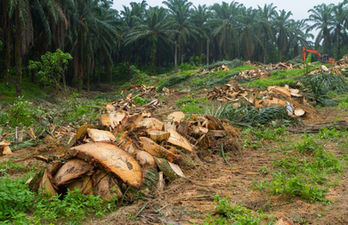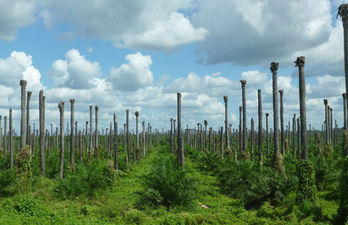
The Silent Threat - Ganoderma

To date, G. boninense remains the greatest threat to the oil palm plantation due to its enormous devastation towards palm trees by causing an incurable basal stem rot (BSR) disease, after invading and colonizing the tree. This soil-borne pathogen is a parasitic and saprophytic fungus that attacks the living tissue and decomposes the bole or lower stem of palm tree through colonization on the root surface. The gradual decay of roots, bole, and trunk tissue caused by BSR obstructs the flow of water and nutrients to the upper parts of mature oil palm trees. This leads to symptoms like frond wilting, yellowing, and eventually, the collapse of entire stands.

Impact
Infected oil palms eventually halt fruit production and collapse, impacting plantation productivity.
Young palms succumb in 1-2 years; mature trees endure for only 3-5 years

Challenges
Identifying BSR in its early stages is challenging as symptoms usually appear when the infection has reached 60-70%. By this point, a significant portion of the palm's base is already damaged.

Consequences
BSR remains asymptomatic until late stages. Late detection hinders control efforts and makes the disease difficult to manage. Moreover, the risk of recurring Oil Palm infection & loss after repeated planting cycles are very high.
Preventive Replanting Strategies
Curative Management of Existing Infected Palms
Discover the future of Ganoderma Care
EMBIO actinoPLUS
This product is a specially formulated microbe-based solution (300g) containing a soil actinomycete (Streptomyces GanoSA1), which acts as a vaccine for preventing Ganoderma infection, specifically Basal Stem Rot disease. It is also a formula for improving soil fertility and vegetative growth. It is prepared in a granule form by incorporating the microbe into vermiculite and biocharcoal which act as carriers for this Bio Control Agent.
%20(1)_edited.png)
A Revolutionary Preventive Approach
We recommend enhancing current control practices of sanitation by synergising with our revolutionary Biological Control Agent, EMBIO actinoPLUS (Streptomyces GanoSA1), to provide your oil palms with a vaccination to significantly minimize risk of infection.

Meet Your Ally:
Streptomyces GanoSA1
Benefits
Mechanism of Action
1. Antagonistic Activity
Produce powerful antibiotics & antifungal properties
2. Biofilm Formation
Seal a protective shield on root surfaces.
3. Stimulating Plant Defense
Activate palm's natural defenses
4. Competition for Resources
Outcompete Ganoderma for vital nutrients
5. Enhanced Nutrient Uptake
Fuel improved palm health & contribute to its resistance
6. Improved Soil Structure
Enhance water infiltration and aeration
Proven Effectiveness, Safety & Track Record

It's time to regain control!
Invest in our revolutionary Biological Control Agent, Streptomyces GanoSA1.
.png)







